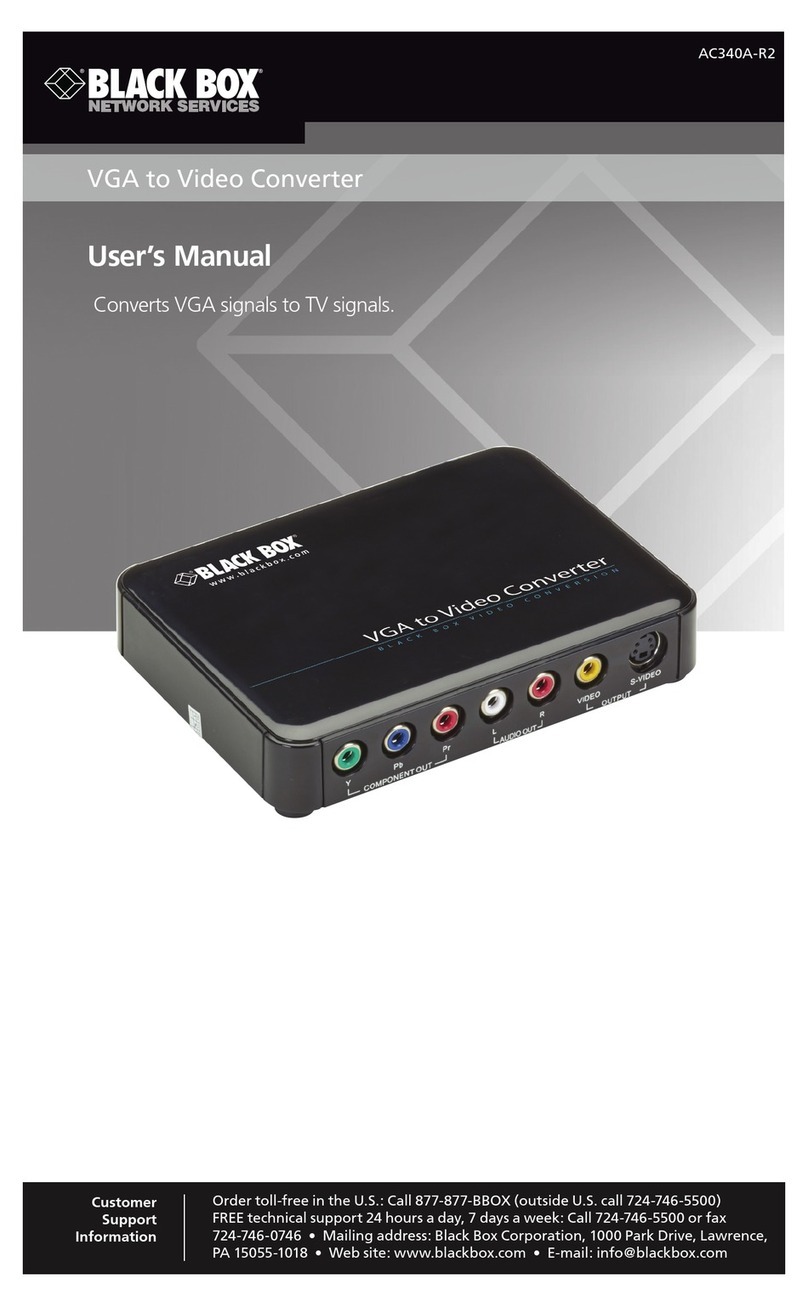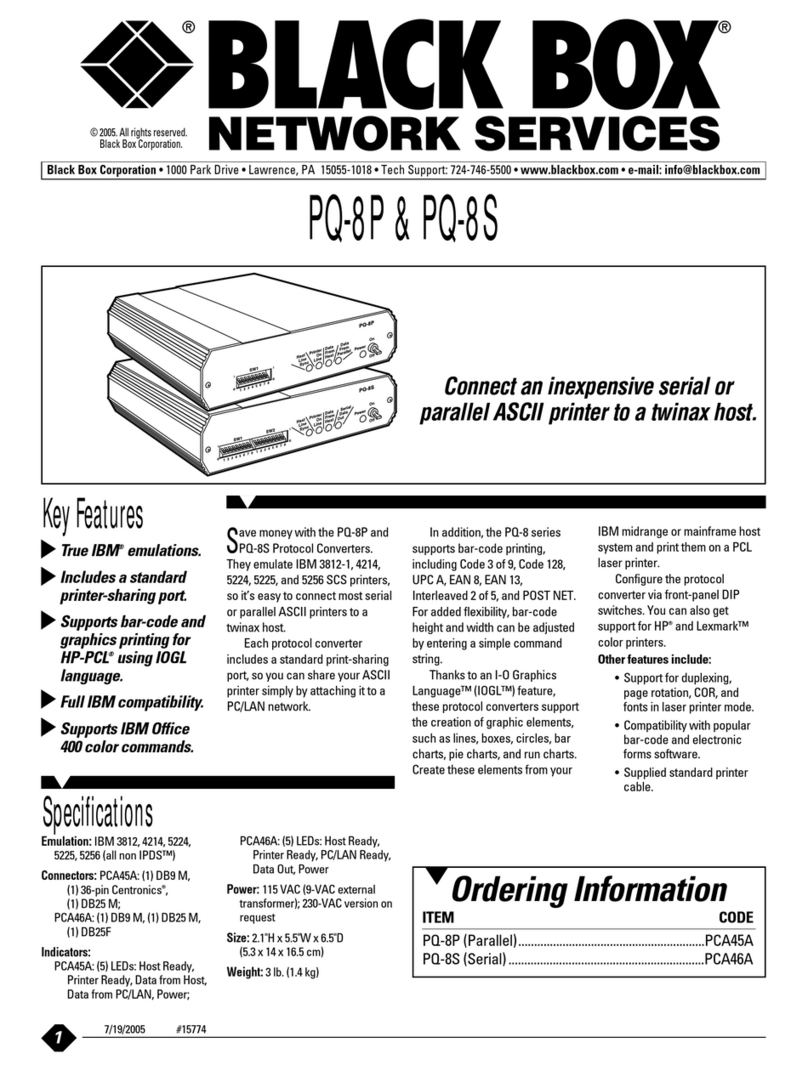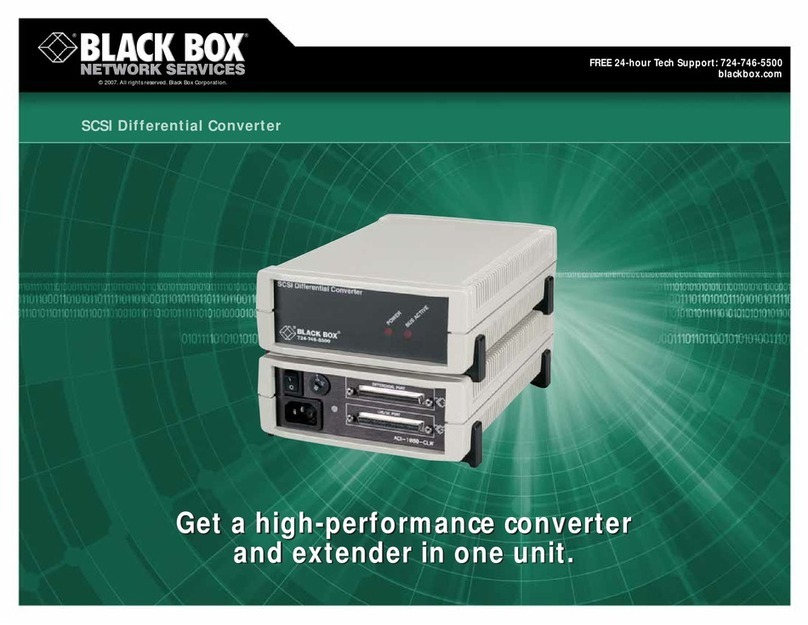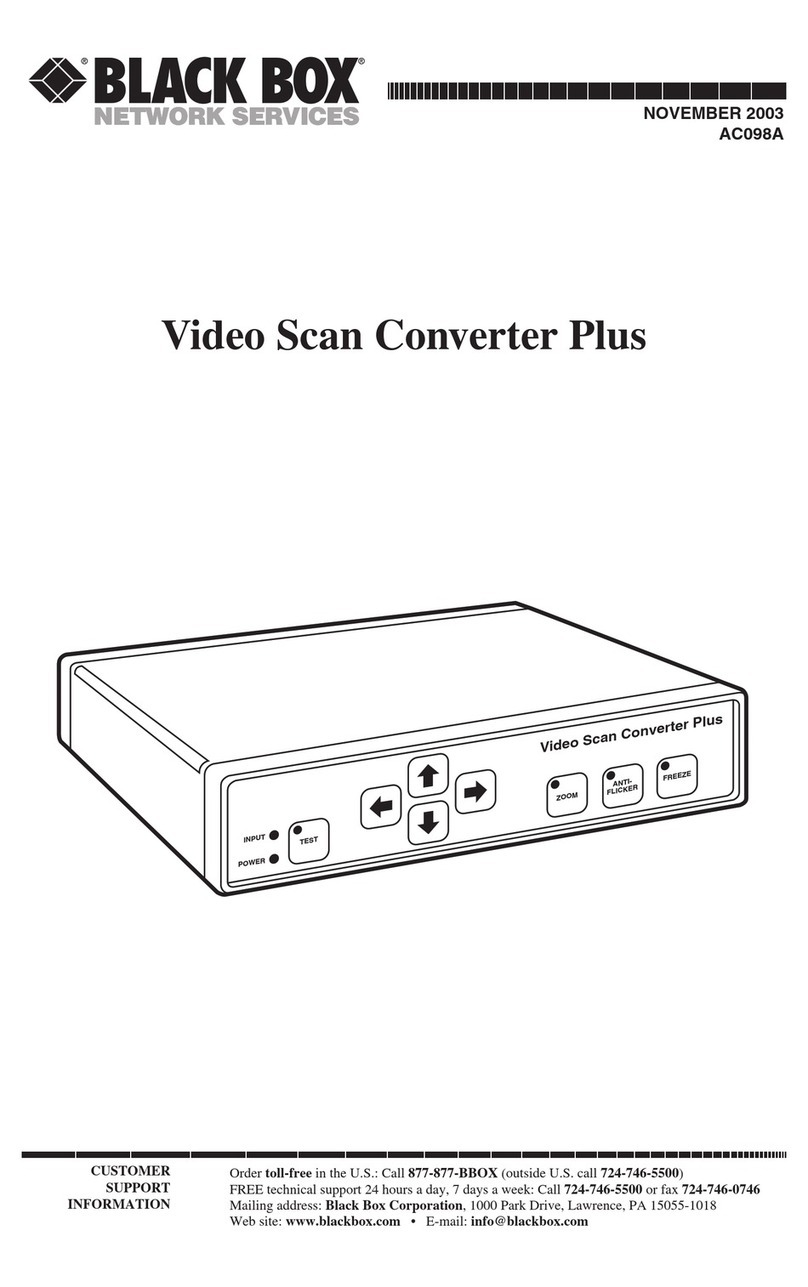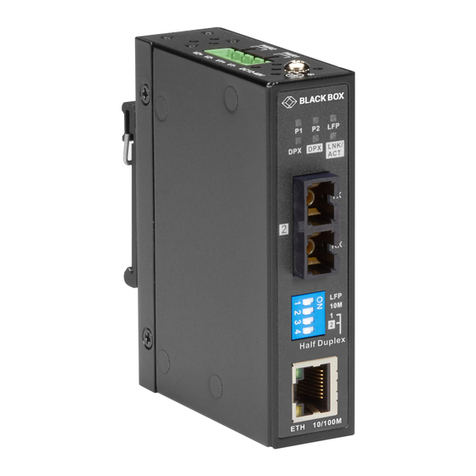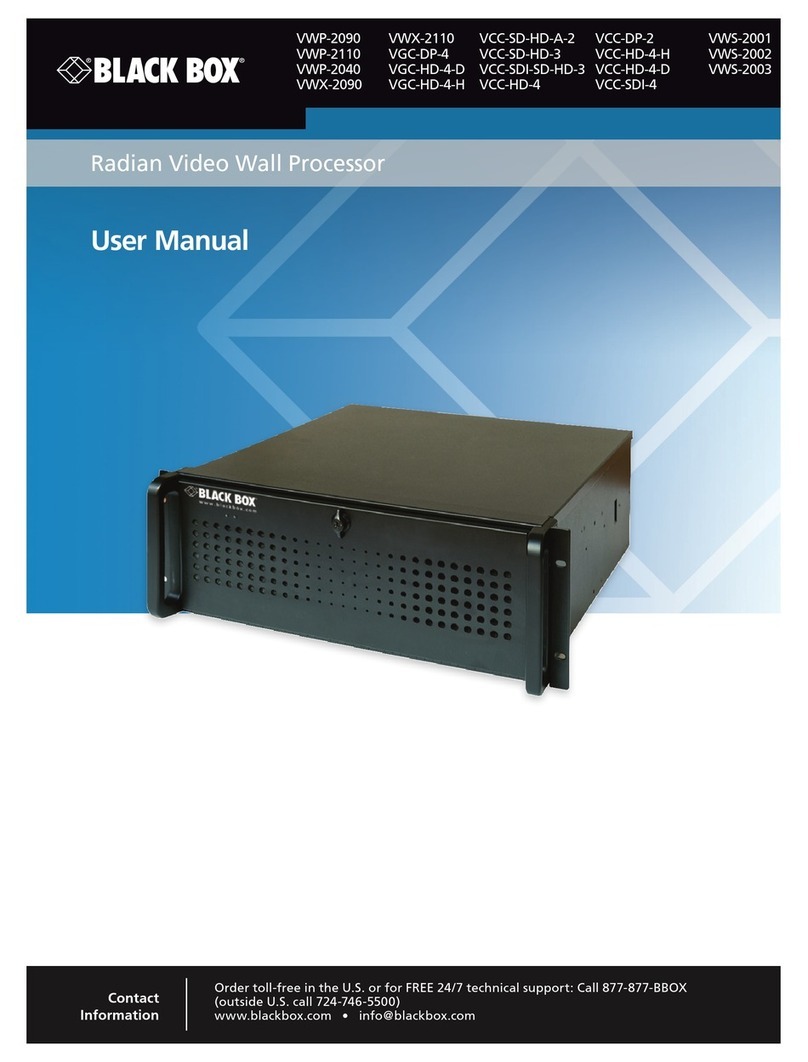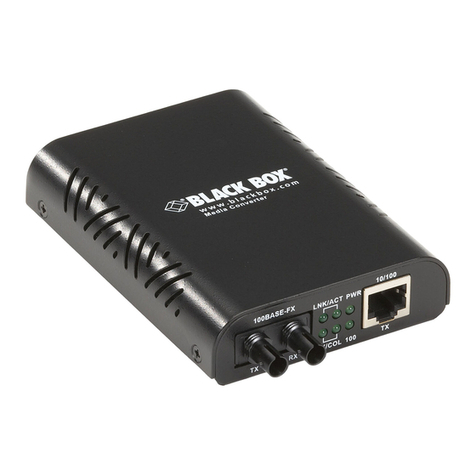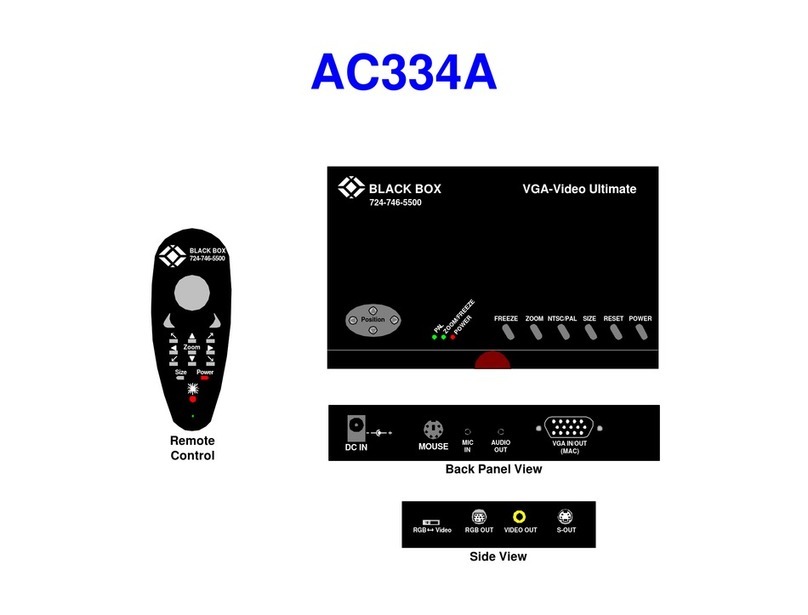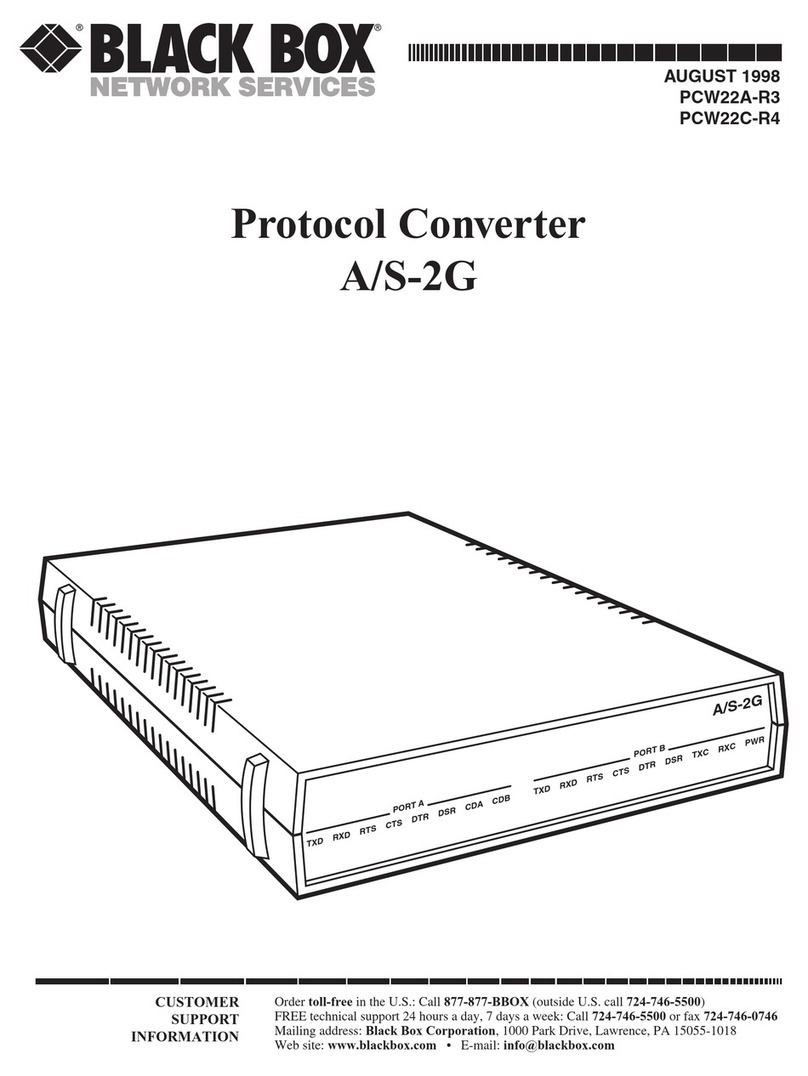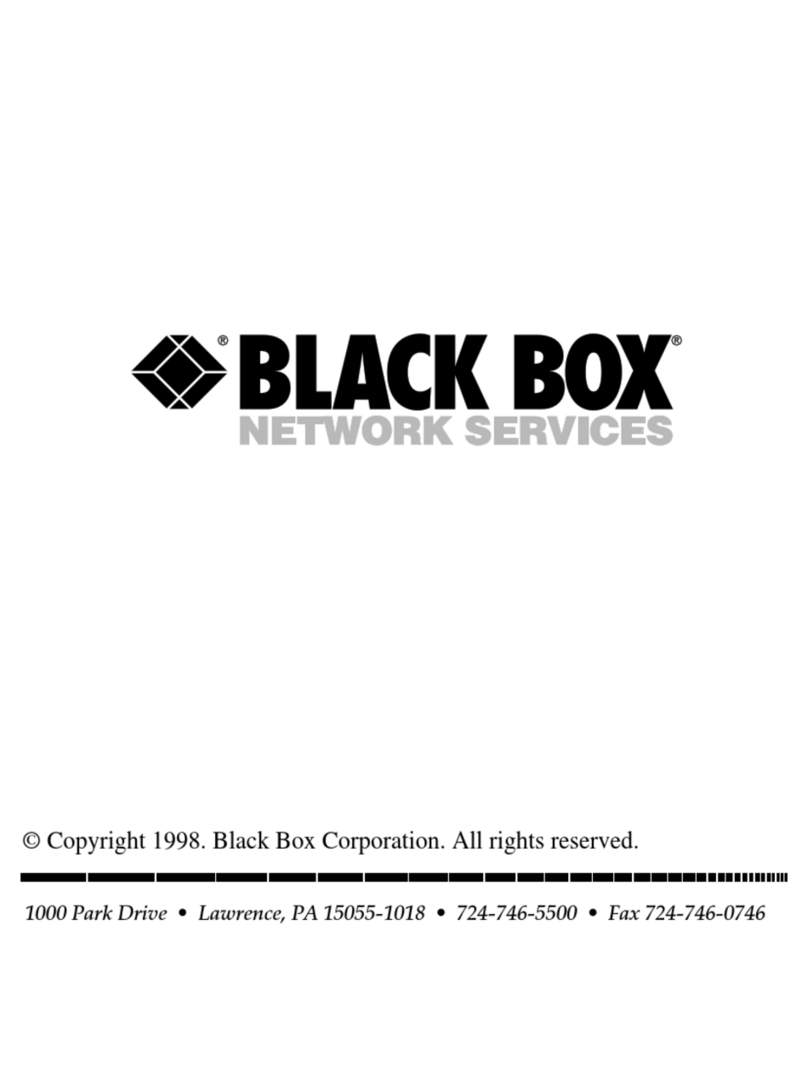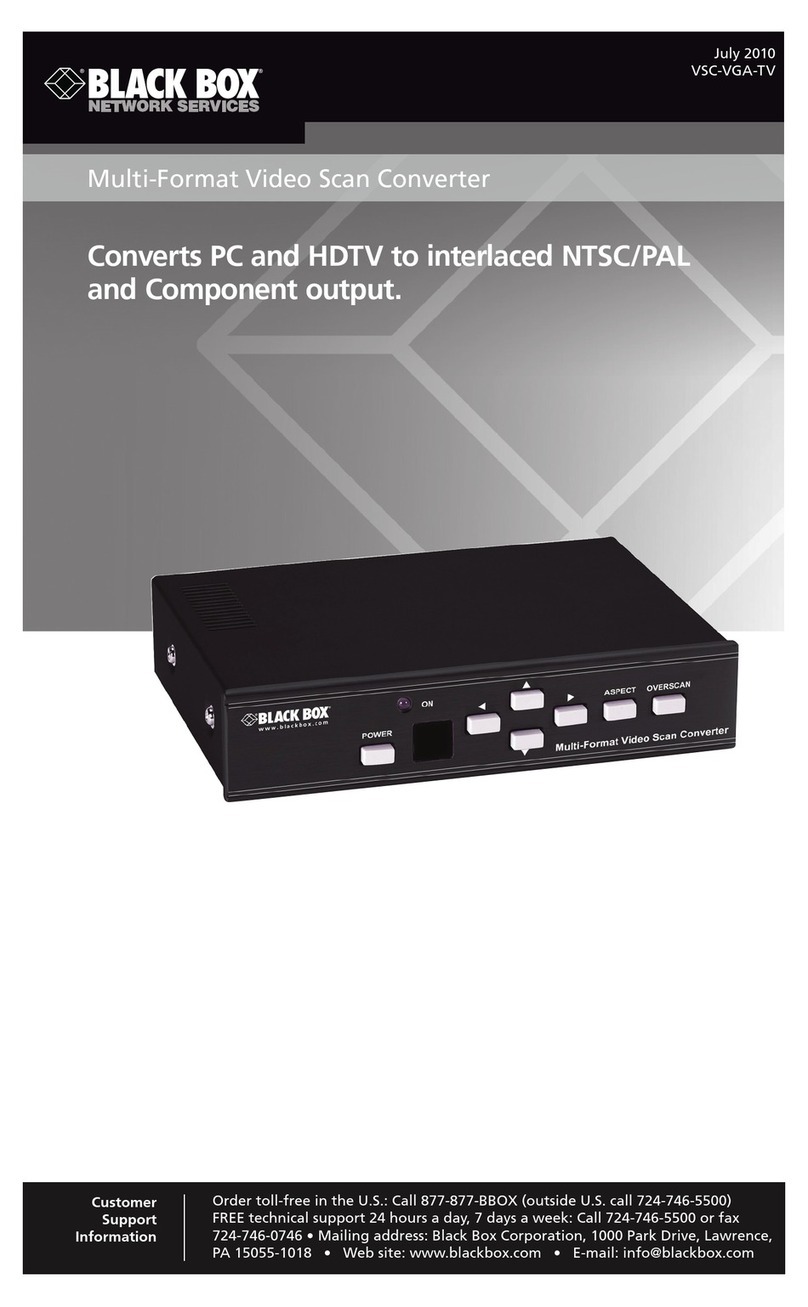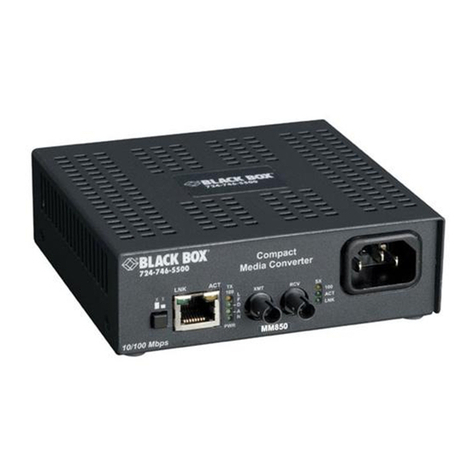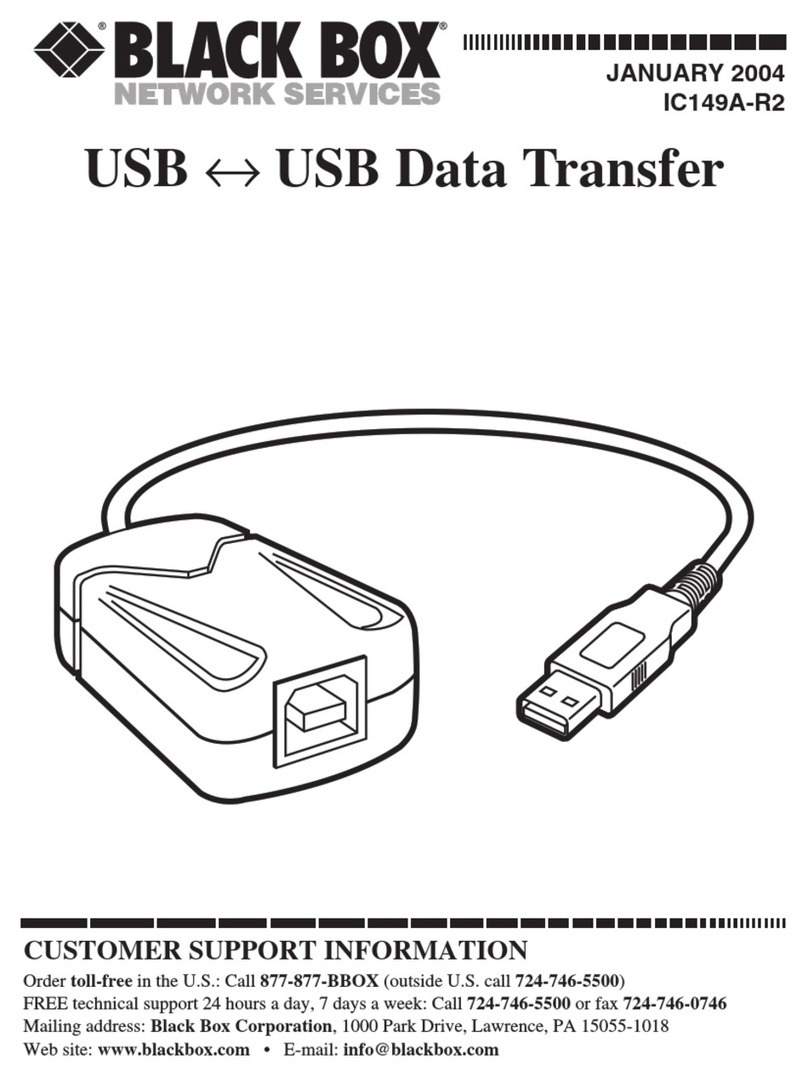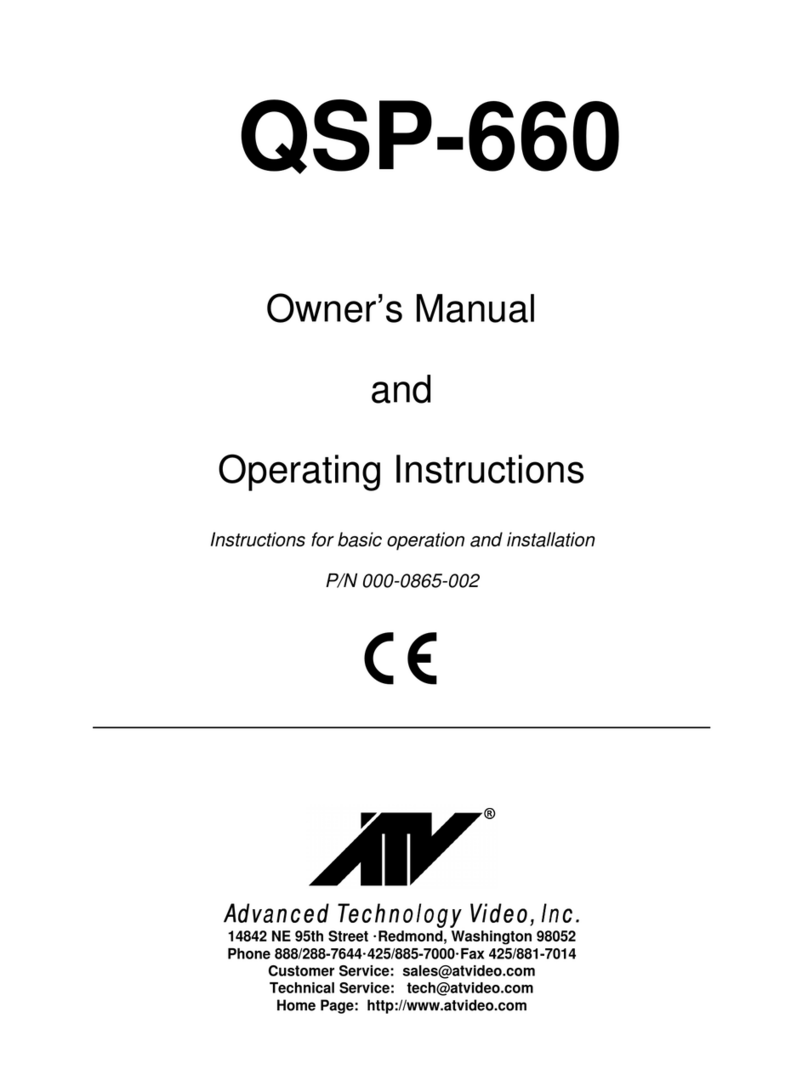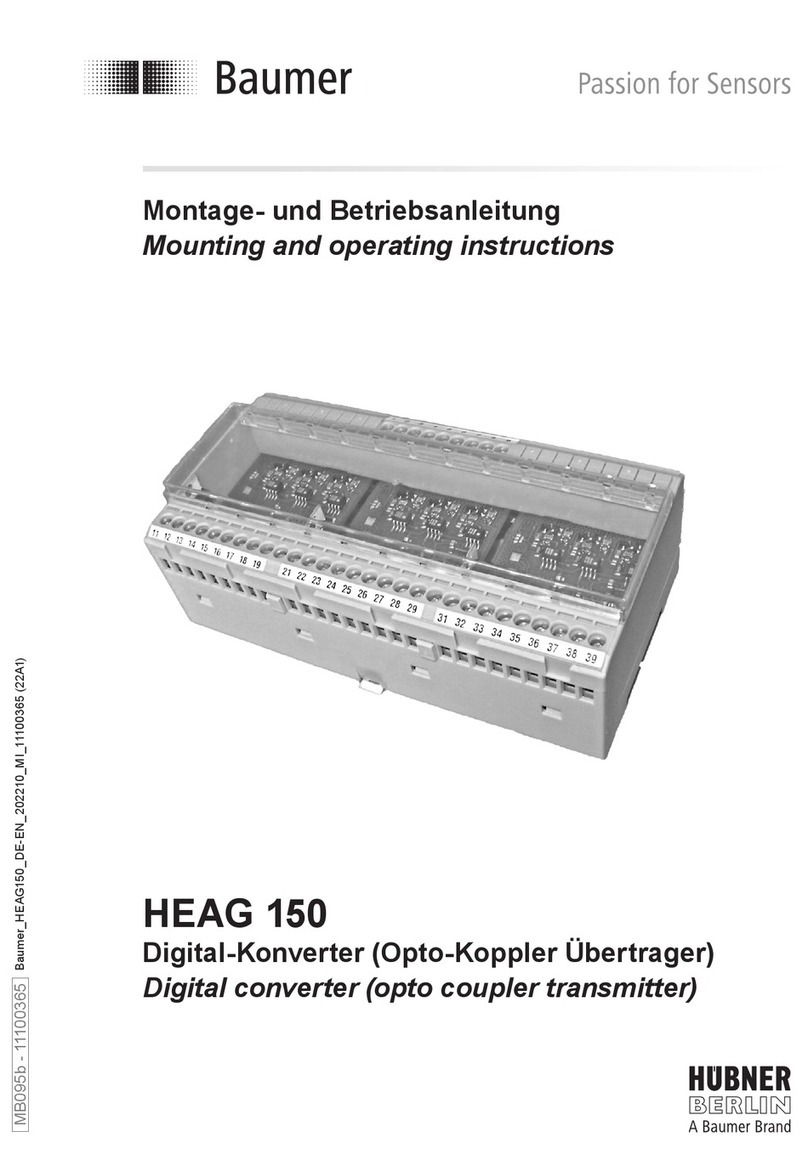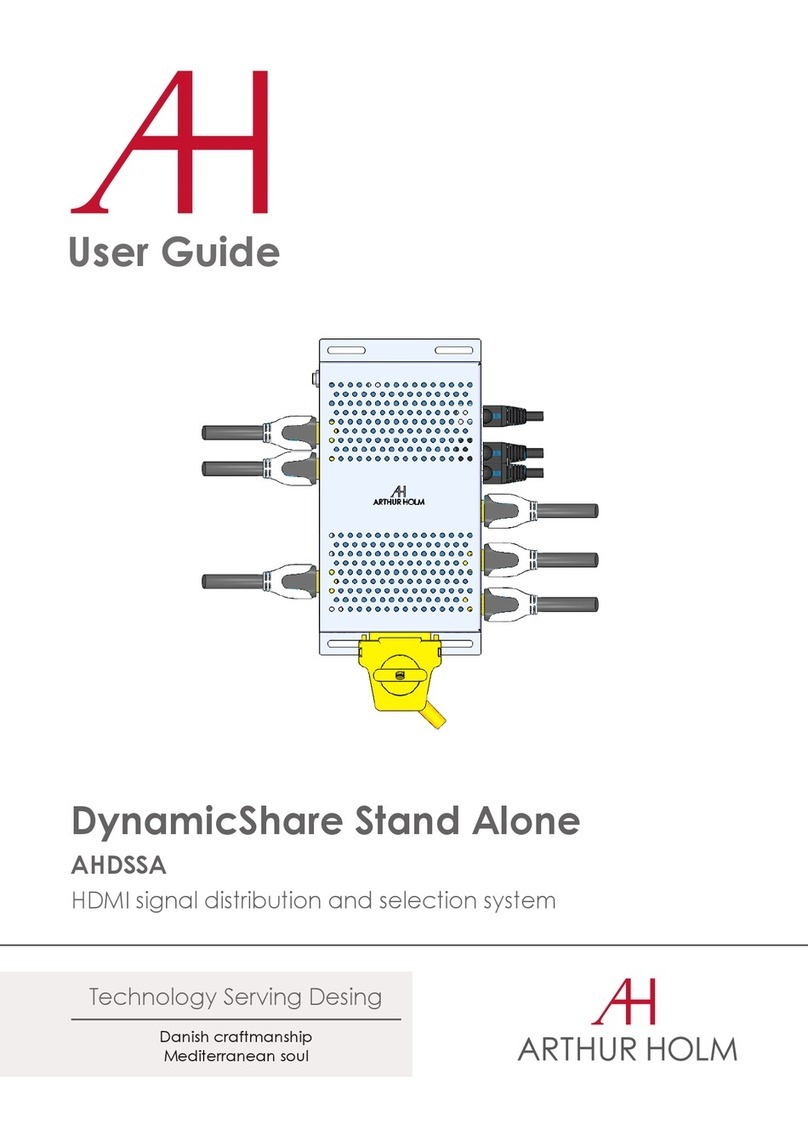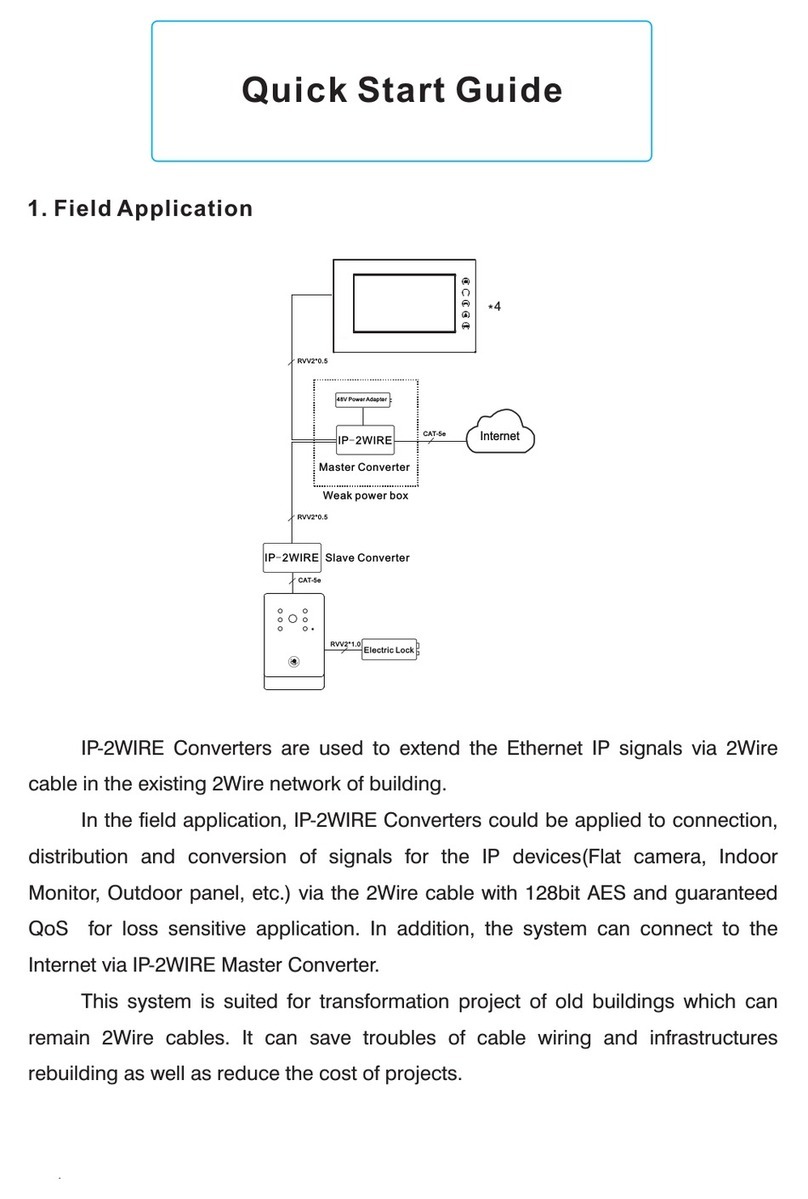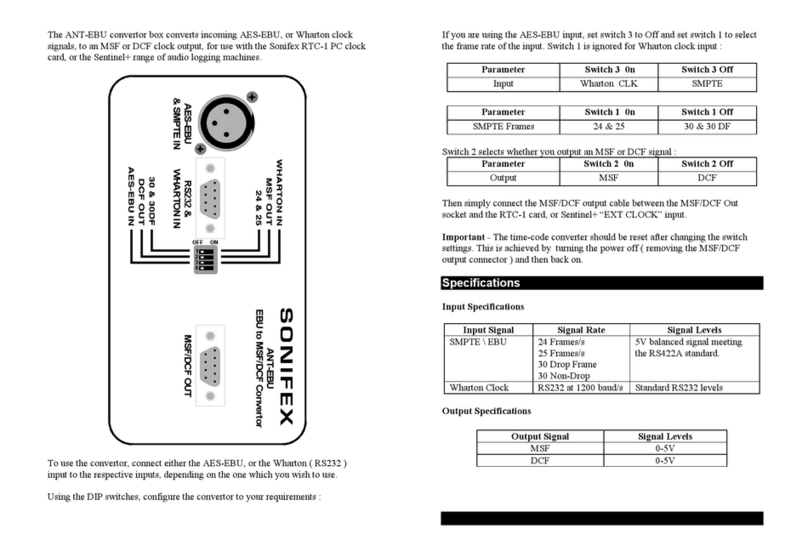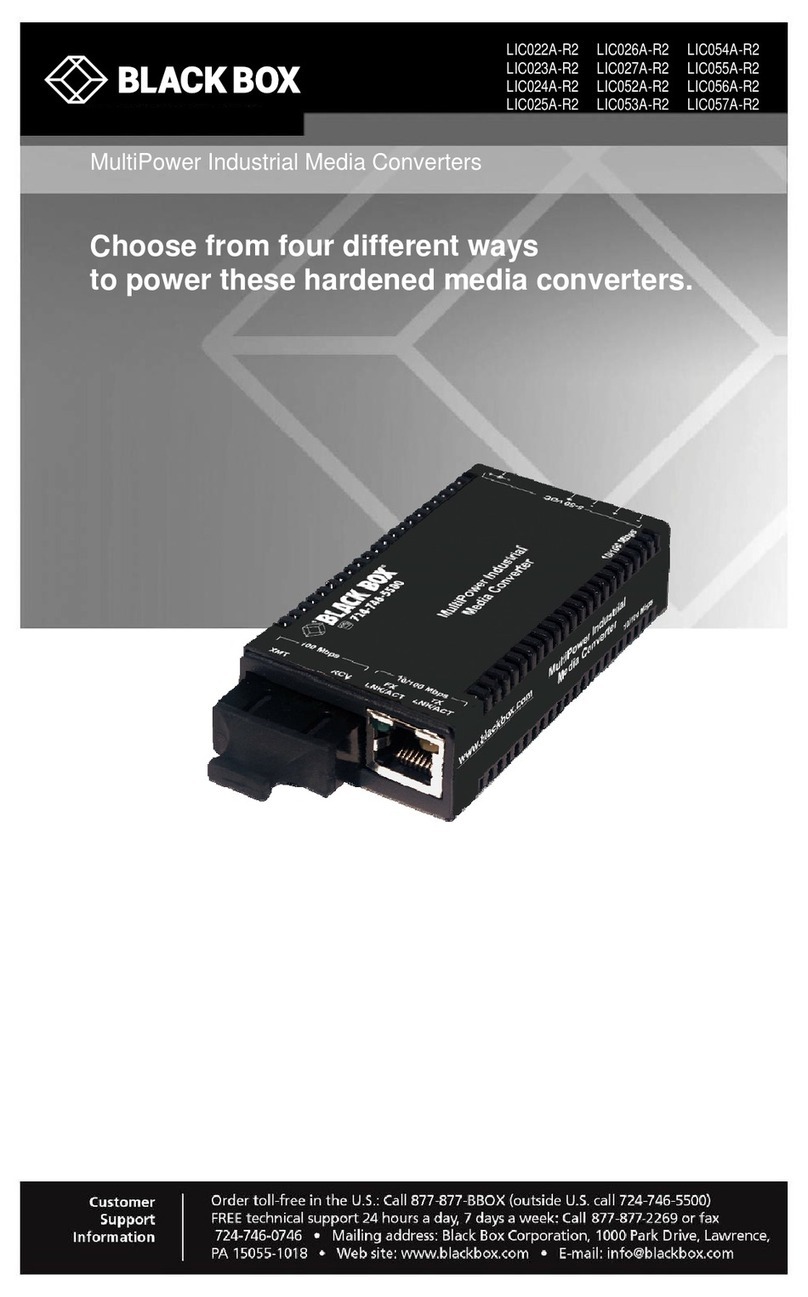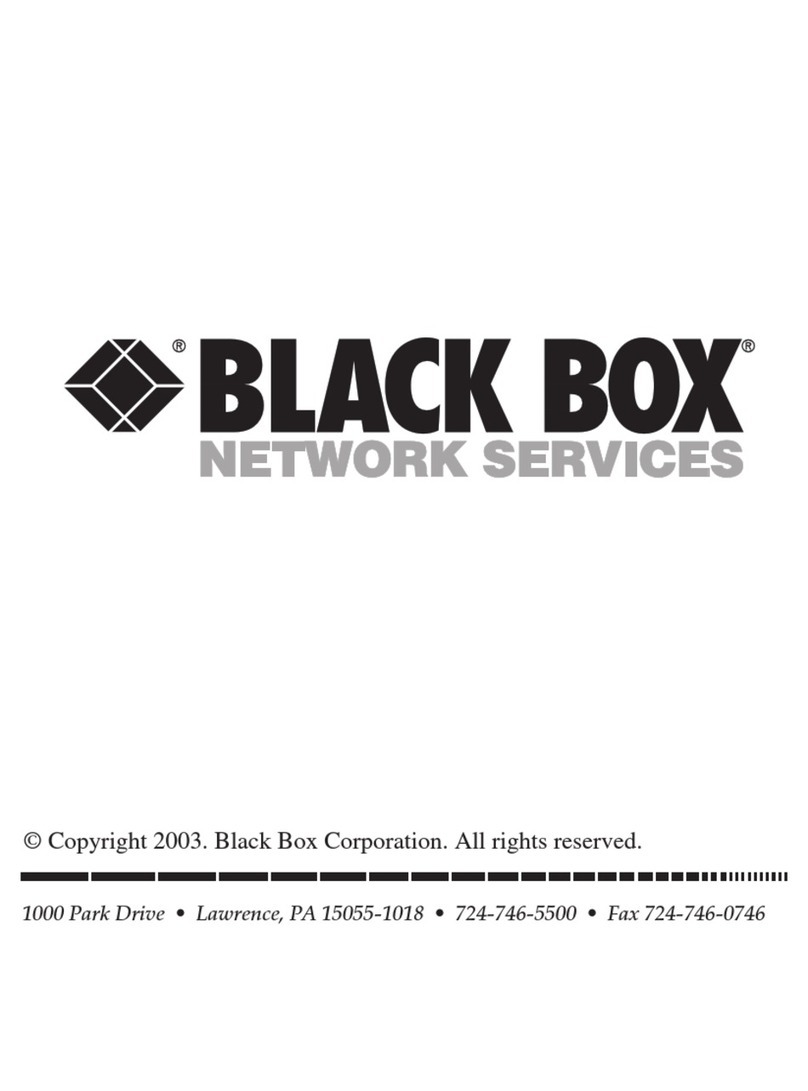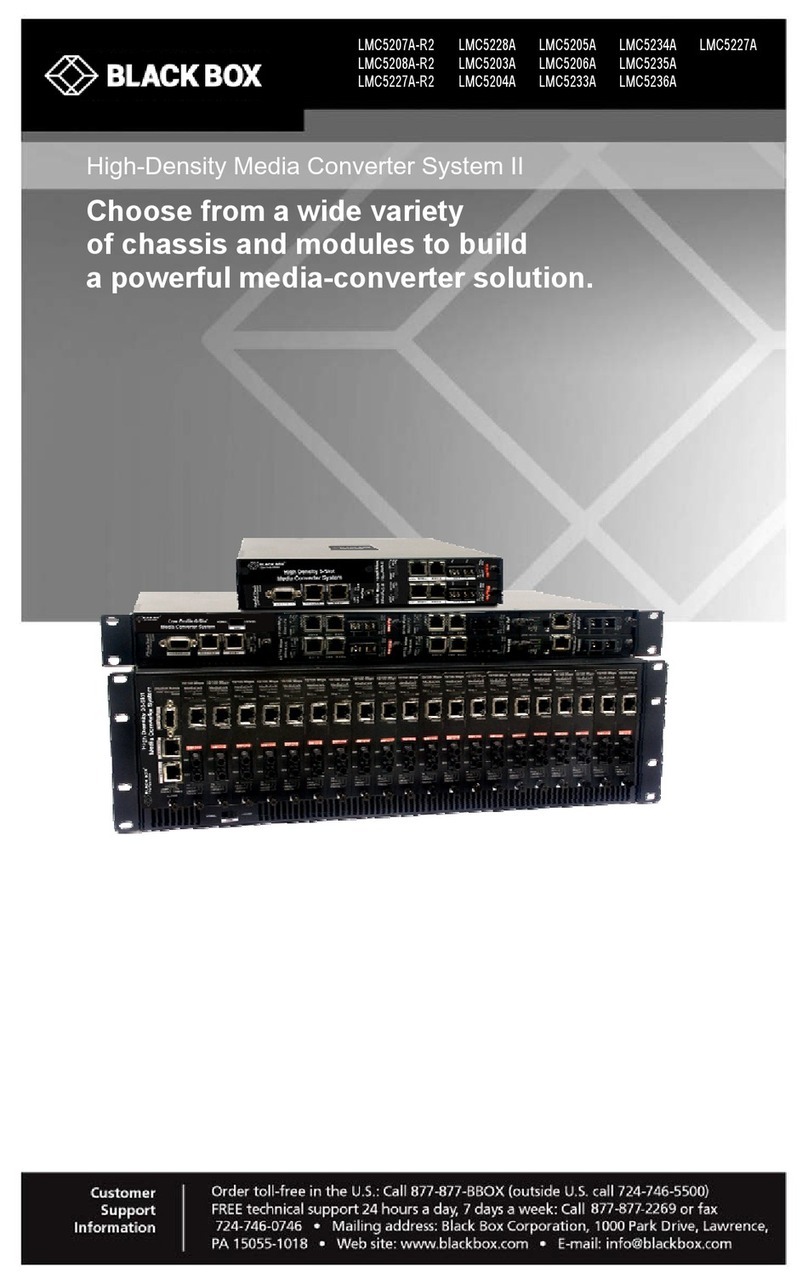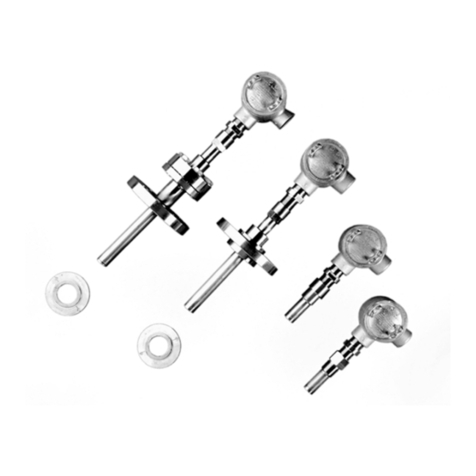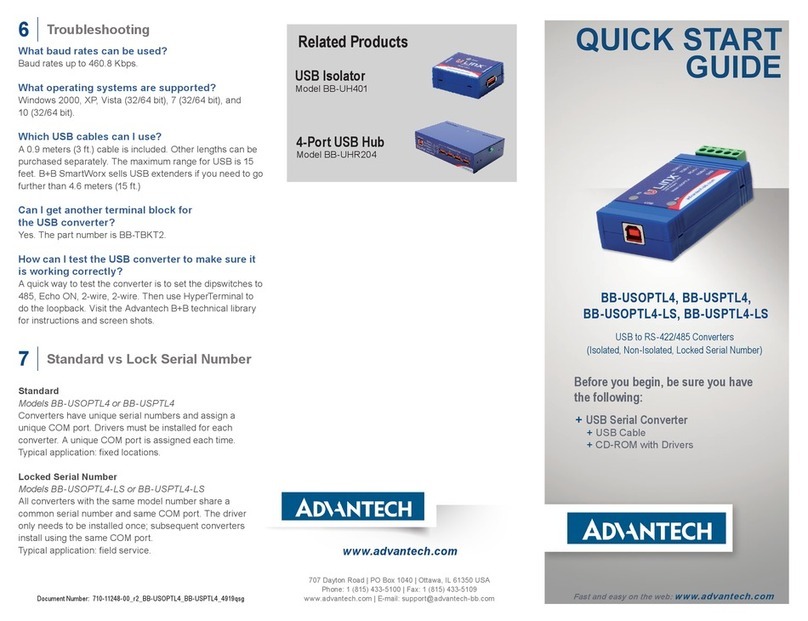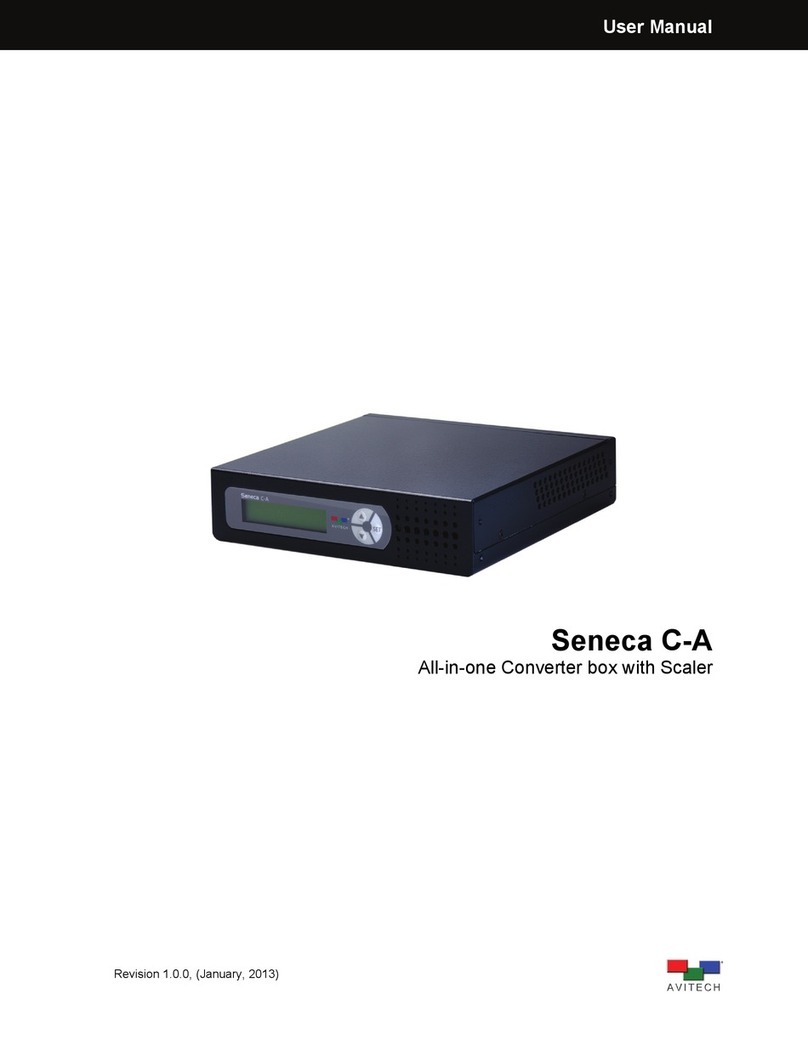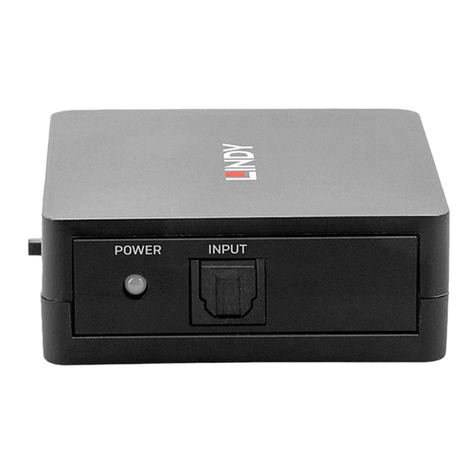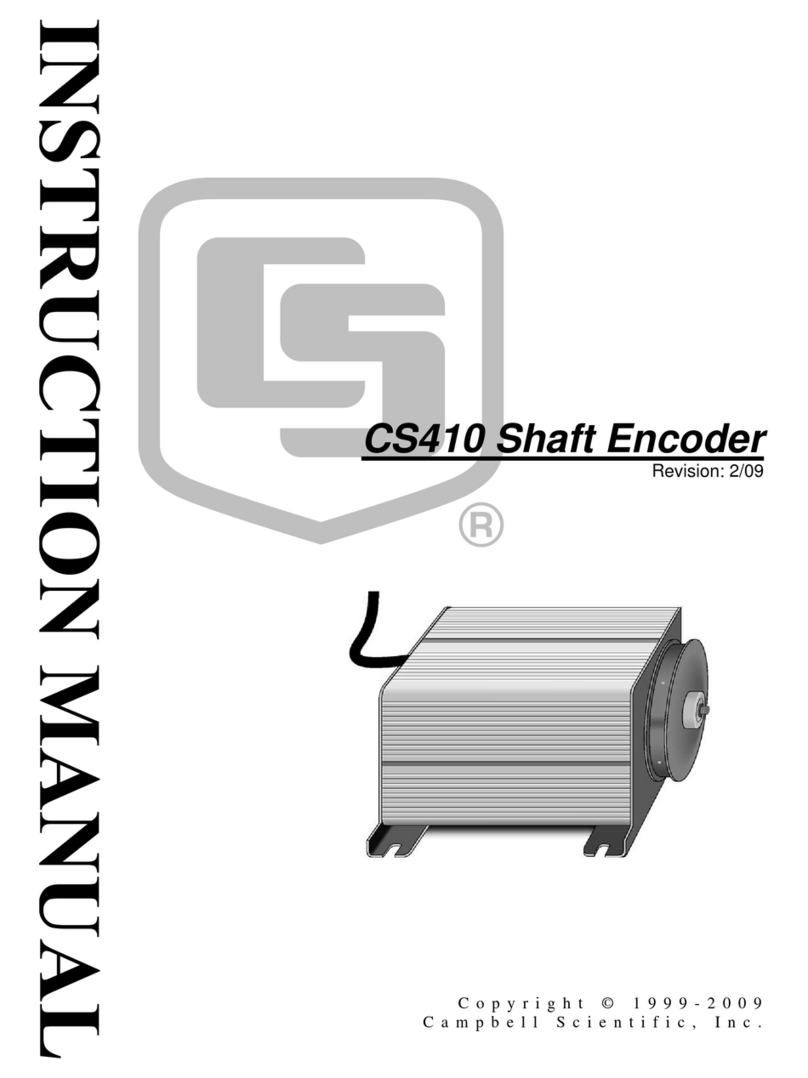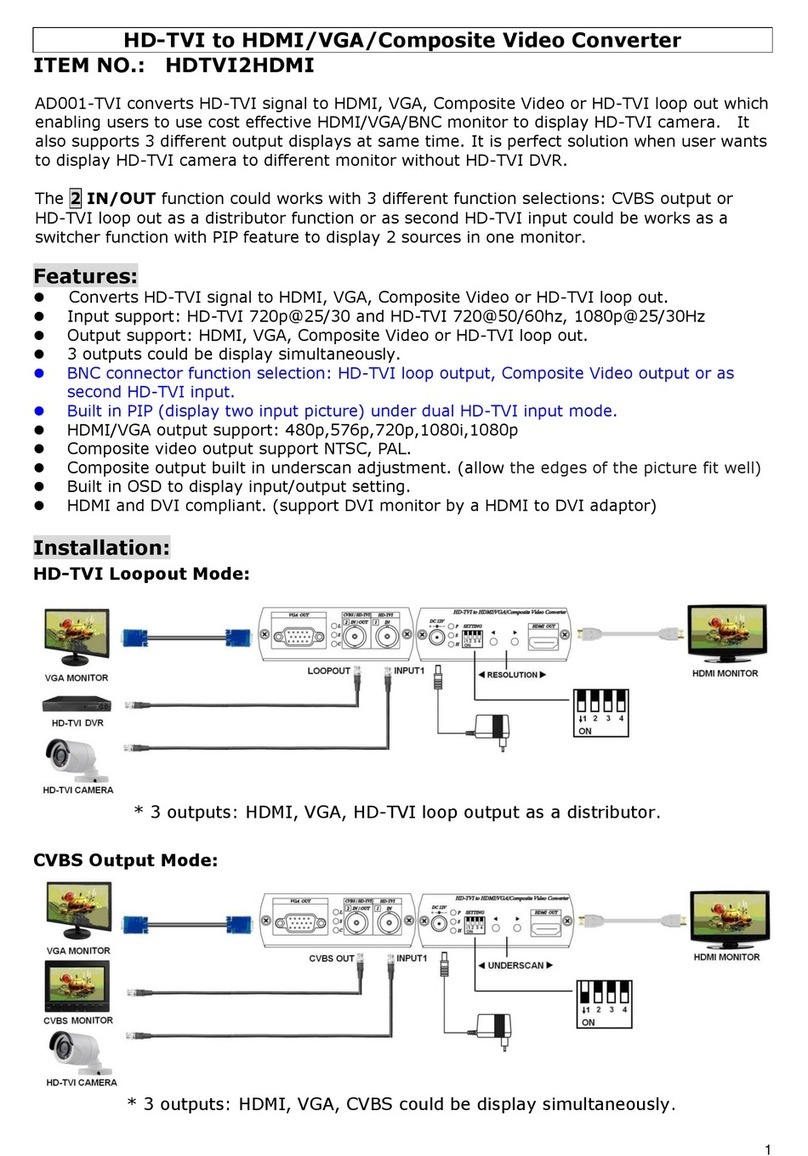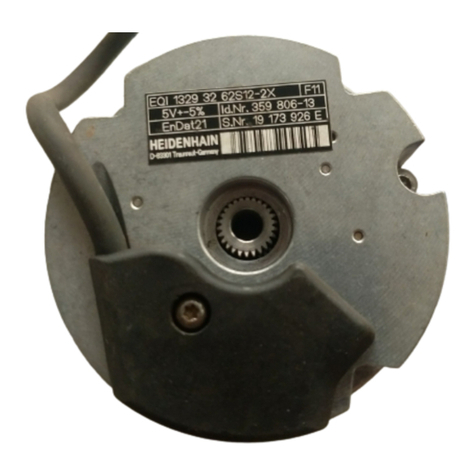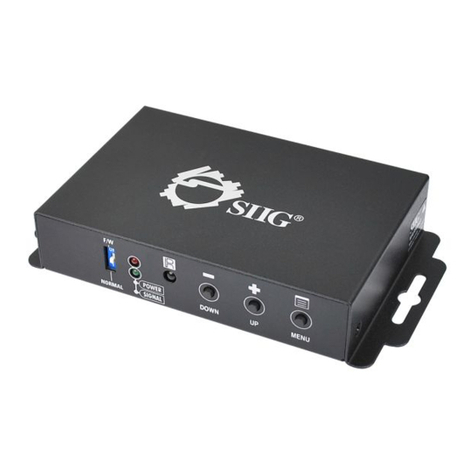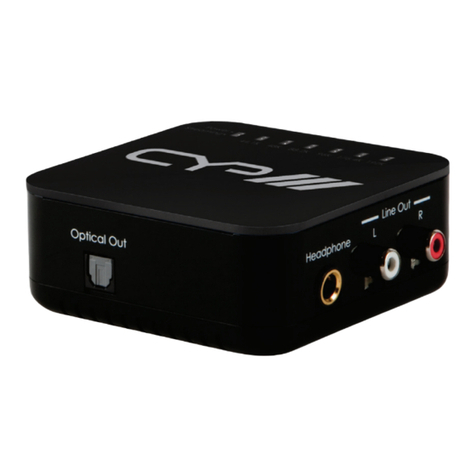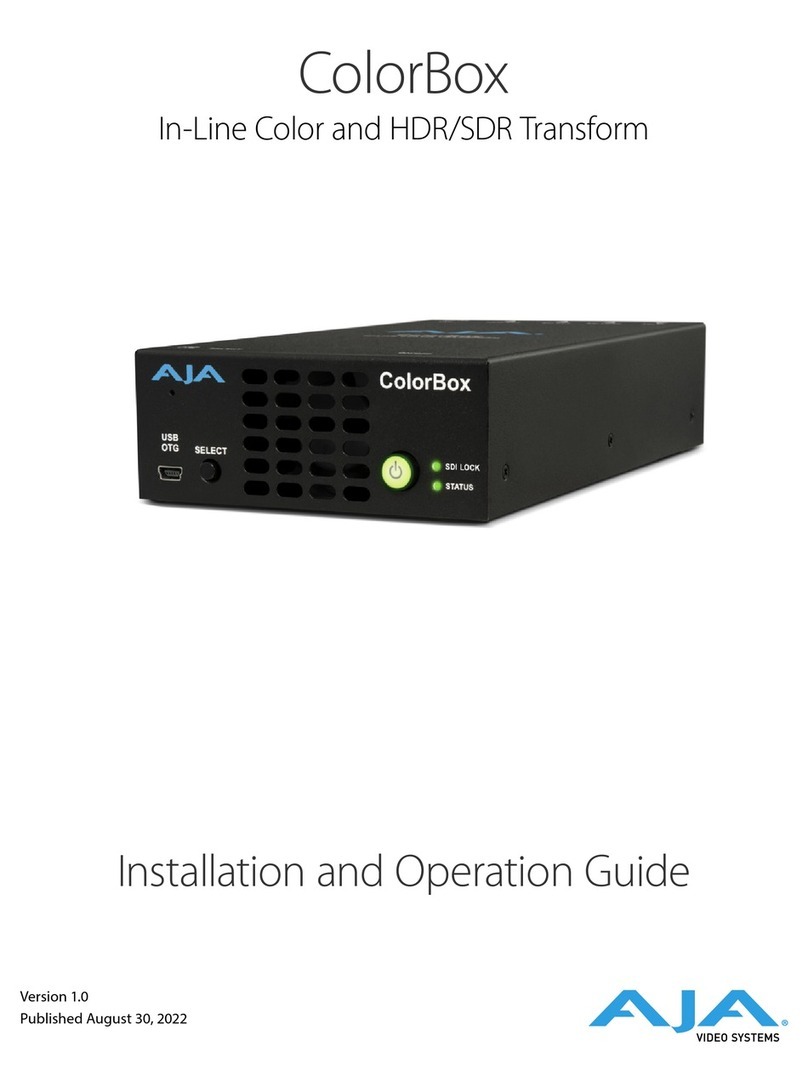2
easily link half-duplex or full-
duplex, unshielded or shielded
10BASE-T twisted-pair copper
cable to half- or full-duplex
10BASE-FL fiber.
The modules can be used, for
instance, to connect a 10BASE-T
terminal device and a 10BASE-FL
hub, or to connect a 10BASE-T
hub and a 10BASE-FL terminal
device.
For the fiber side, you can
order the module with either
850-nm multimode ST connectors
(LMC1601C-R2) or 1300-nm single
mode ST connectors (LMC1601C-
SM-R2). The multimode model
supports fiber cabling distances
up to 2 km (1.2 mi.) while the
single-mode model supports
up to 20 km (12. mi.).
In addition to low propagation
delay, both modules feature link
alert functions that can save you
time spent troubleshooting by
monitoring links and alerting you
to link failures on far-end devices.
Without these functions, a failed
link may appear normal when, in
fact, the opposite is true. Link
failures are reported correctly
so you can diagnose and correct
problems quickly.
You also get an automatic
MDI/MDI-X switch that enables
either straight-through (MDI)
or crossover (MDI-X) cables
to be used when connecting to
10BASE-T or devices such as
hubs, transceivers, or network
interface cards (NICs). This
AutoCross™ feature determines
the characteristics of the cable
connection and automatically
configures the twisted-pair
copper port for crossover or
straight-through cabling.
These modules feature four-
position DIP switches on their
circuit boards. The switches
enable you to turn autonegotiation
on or off as well as set the device
to operate in full- or half-duplex
mode.
For integrating twisted pair
and fiber optics in Fast Ethernet
networks, we offer 100BASE-TX
to 100BASE-FX edia Conversion
Center odules, including
models for 1300-nm multimode ST
(LHC160 C-R3), 850-nm multimode
SC (LHC160 C-SC-R3), and
1300-nm single-mode SC
(LHC160 C-SM-R3). The multi-
mode models transmit up to 2 km
(1.2 mi.), and the single-mode SC
model carries data up to 20 km
(12. mi.).
The modules feature N-Way
autonegotiation, which enables
you to force the proper port
configuration through an external
switch on converters.
As with the 10BASE-T models,
the 100BASE-TX units offer link
alert and AutoCross features.
If your link fails because of a far-
end fault, the alert function kicks
in—an indicator will blink to
inform you of the problem. The
AutoCross function configures
the converter for either straight-
through or crossover cables
automatically, electronically
determining the type of cable
that’s plugged into it and
configuring the port for that
cable type.
The modules also come with
circuit-board DIP switches for
setting operation for full- or half-
duplex and autonegotiation.
(NOTE: The 100-Mbps ports on the
converters do not autonegotiate.
One side of the link must be forced
to operate at that speed.)
For connecting single-mode
fiber cable to multimode fiber
cable, order our 1300-nm
ultimode to 1300-nm Single-
ode, Protocol Independent
Conversion Center odule
(LHC1606C). With SC to SC
connectors, this ATM or Fast
Ethernet converter is capable
of either half- or full-duplex
transmission.
In addition, the LHC1606C
offers low signal loss and a high
resistance to radio frequency
noise. In turn, you get extended
distances between devices—up
to 20 km (12. mi.) in single-mode,
and up to 2 km (1.2 mi.) in
multimode. It can be installed
in any 155-Mbps or slower fiber
network.
Need protocol-independent
single-mode to multimode
converter that supports Gigabit
Ethernet speeds? Then, our
Gigabit Single- ode to
ultimode Conversion Center
odule (LHC1607C) may be what
you’re looking for. As with the
LHC1606C, this module offers low
signal loss and high resistance to
radio frequency noise.
The LHC1607C, which supports
wavelengths of 850 nm and
1300 nm, can transmit up to 5 km
(3.1 mi.) on the single-mode side
and, while using 1300-nm
wavelength, up to 550 meters
(180 .5 ft.) on the multimode side.
The module has SC connectors
and is capable of either half- or
full-duplex transmission.
For integrating unshielded
twisted-pair and fiber optic
cabling in a Token Ring network,
order the Token Ring UTP to
10BASE-FL Conversion Center
odule (LMC1609C-TR).
Operating directly with any
other IEEE 802.5j complaint device,
this module converts UTP to
multimode fiber in - or 16-Mbps
networks in half-duplex. And
there‘s no need to configure the
media converter for a certain
speed; that’s left to the attached
devices.
The converter supports
multimode fiber distances up to
2 km (1.2 mi.) using a wavelength
of 850 nm.
Switches and jumpers on the
card control active and passive
operation, reduce squelch,
and enable you to perform an
internal crossover function on the
UTP signals. You can also perform
loopback functions in either
passive or active Token Ring
networks.
To control the converters you
select for your modular chassis,
be sure to order the Conversion
Center SN P anagement
odule (LMC1600-MM). Via its
RJ- 5 ports, you can readily and
remotely access information
regarding the status and identity
of each installed converter. This
can be done using any standard
SNMP management application
through the command line
interface of a terminal or terminal
emulator that‘s attached to the
management module.
Specifically, the module
informs you as to the identification
of the media converter type and its
slot number, and how the chassis
is drawing its power. It also
enables quick identification of port
and wiring failures in the system.
aximum
TX Power Sensitivity
aximum
In Power Link Budget
LMC1601C-R2 -16 dBm -10 dBm -29.5 dBm -7.2 dBm 13.5 dB
LMC1601C-SM-R2 -27 dBm -1 dBm -3 dBm -1 dBm 7 dB
LHC160 C-R3 19 dBm -1 dBm -30 dBm -1 dBm 11 dB
LHC160 C-SC-R3 -19 dBm -1 dBm -30 dBm -1 dBm 11 dB
LHC160 C-SM-R3 -15 dBm -8 dBm -31 dBm -8 dBm 16 dB
LHC1606C (Multimode) -19 dBm -1 dBm -30 dBm -1 dBm 11 dB
(Single-Mode) -15 dBm -8 dBm -30 dBm -8 dBm 16 dB
LHC1607C (Multimode, 850-nm) -10 dBm - dBm -17 dBm 0 dBm 7 dB
(Multimode, 1300-nm) -13 dBm -3 dBm -20 dBm -3 dBm 7 dB
(Single-Mode) -13 dBm -3 dBm -20 dBm -3 dBm 7 dB
LMC1609C-TR -19 dBm -1 dBm -32.5 dBm -1 dBm 13.5 dB
inimum
TX Power
FiberSpecifications



